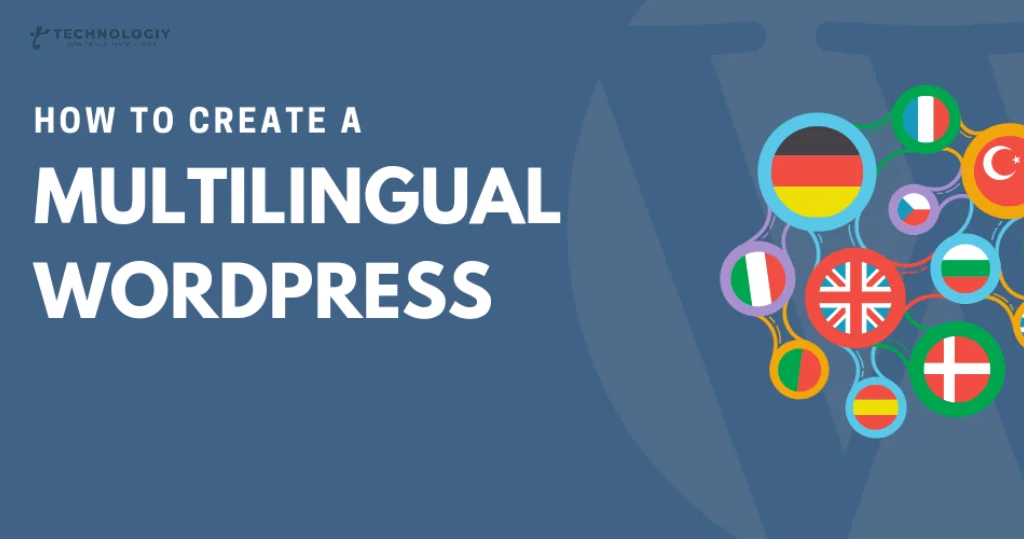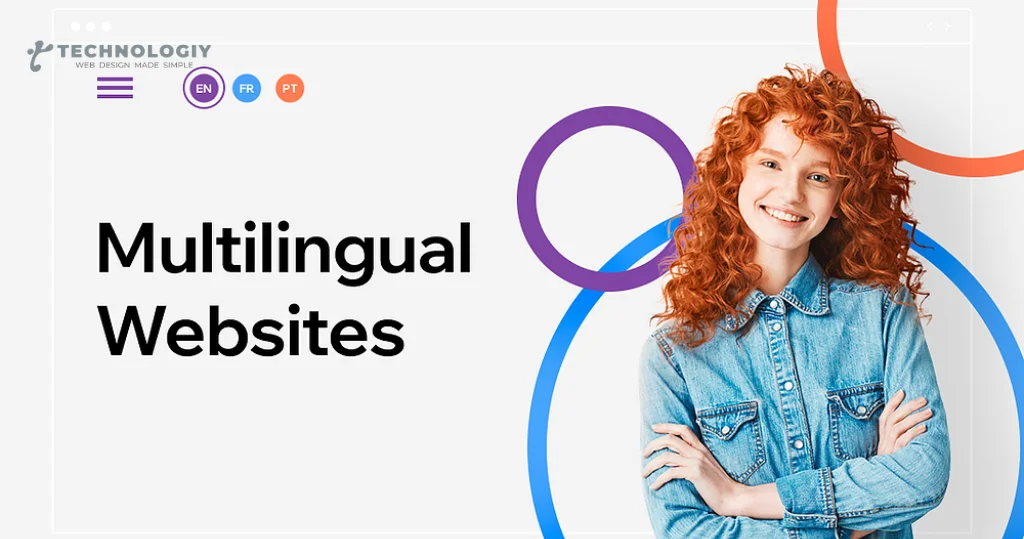The Ultimate Guide to Setting Up a WordPress Multilingual Setup on WordPress Are you looking to expand your online presence and reach a wider audience? Setting up a multilingual website on WordPress is the way to go. With the increasing globalization of the digital world, catering to different languages is essential for businesses and organizations of all sizes. In this comprehensive guide, we will walk you through the process of setting up a multilingual website on WordPress, step by step.
Why Should You Have a Multilingual Website Setup?
Before we dive into the technicalities, let’s discuss why having a multilingual website is so important. By offering your content in multiple languages, you are not only making it accessible to a wider audience but also improving user experience. This can result in higher traffic, increased engagement, and, ultimately, more conversions. A multilingual website can also help you establish a global brand presence and gain a competitive edge in international markets.
Step 1: Choose the Right WordPress Multilingual Plugin:
The first step in setting up a multilingual website on WordPress is selecting the right plugin. Fortunately, there are several plugins available that can simplify the process for you. Some popular options include WPML, Polylang, and Weglot. These plugins provide features like language switching, translation management, and SEO optimization, making it easier to create and manage multilingual content.
Step 2: Install and Activate the Chosen Plugin:
Once you have chosen a WordPress multilingual plugin, you need to install and activate it on your website. You can achieve this by going to the Plugins section in your WordPress dashboard, selecting ‘Add New,’ and then searching for the plugin by its name. Once you find it, click on “Install Now” and then “Activate” to activate the plugin.
Step 3: Configure the Plugin Settings:
Once you’ve activated the plugin, you’ll need to set up its configurations. This typically involves selecting the primary language of your website and adding additional languages that you want to support. You may also need to set up language switchers, choose translation options, and customize other settings based on your specific requirements. Make sure to carefully review the documentation provided by the plugin developer for detailed instructions.
Step 4: Translate Your Content:
Now that you have set up the foundation for your multilingual website, it’s time to start translating your content. Most multilingual plugins provide an interface within the WordPress editor that allows you to easily translate pages, posts, and other types of content. You can either manually translate the content yourself or hire professional translators to ensure accurate and high-quality translations. Remember to pay attention to SEO optimization while translating your content to improve visibility in search engines.
Step 5: Test and Optimize:
Once you have translated your content, it’s crucial to thoroughly test your multilingual website to ensure everything is working as intended. Check for any layout or formatting issues, broken links, or missing translations. Pay attention to the user experience and make necessary optimizations to enhance performance. Additionally, consider implementing a language switcher widget or navigation menu to make it seamless for users to switch between languages.
Setting up a multilingual website on WordPress is a powerful way to expand:
Your reach and connect with a global audience. By following the steps outlined in this guide, you can create a seamless multilingual experience for your website visitors. Remember to choose the right WordPress multilingual plugin, configure its settings, translate your content accurately, and test your website thoroughly. With a well-executed multilingual website, you will be able to grow your online presence and unlock new opportunities in the international market.

Boost Your Website’s Reach:
Mastering WordPress Multilingual Setup Are you looking to expand your website’s reach and cater to a global audience? If so, mastering the WordPress Multilingual Setup is the key to unlocking new opportunities for your online presence. In this comprehensive guide, we will walk you through the steps needed to create a multilingual website using WordPress, empowering you to effectively communicate with a diverse audience.
Why WordPress Multilingual Setup Matters:
In today’s interconnected world, having a website that speaks the language of your target audience is crucial. With WordPress Multilingual Setup, you can easily translate your website’s content into multiple languages, reaching a wider audience and increasing your chances of engaging with potential customers.
Benefits of WordPress Multilingual Setup:
Expanded Reach:
By offering your website in different languages, you can connect with people from around the world, breaking down language barriers and increasing your global reach.
Improved User Experience:
Providing content in users’ native languages enhances their experience, making them more likely to stay on your website, explore further, and convert into loyal customers.
Enhanced SEO:
A multilingual website can improve your search engine optimization (SEO) efforts. By targeting specific keywords in different languages, you can rank higher in local search results, attracting more organic traffic.
Getting Started: Mastering WordPress Multilingual Setup:
Choose a Translation Plugin:
WordPress offers a variety of translation plugins that seamlessly integrate with your website. Some popular options include WPML, Polylang, and Weglot. Choose a plugin that suits your needs and install it on your WordPress dashboard.
Configure the Plugin:
Once installed, configure the translation plugin according to your website’s requirements. This includes selecting languages, setting up language switchers, and choosing translation options.
Translate Your Content:
With the translation plugin in place, it’s time to start translating your content. Begin with the most important pages, such as your homepage, about page, and product or service descriptions. You can either hire professional translators or use machine translation, depending on your budget and quality preferences.
Customize Language Switchers:
Language switchers allow visitors to switch between different language versions of your website. Customize the switchers to align with your website’s design and make them easily accessible to users.
SEO Optimization:
Optimize each language version of your website for SEO by conducting keyword research specific to each target market. Translate page titles, meta descriptions, and URLs, ensuring that they contain relevant keywords.
Test and Optimize:
Before launching your multilingual website, thoroughly test each language version to ensure accuracy and functionality. Monitor user feedback and analytics to identify areas for improvement and make necessary adjustments.
Mastering WordPress Multilingual Setup is a game-changer for expanding:
Your website’s reach and engaging with a diverse audience. By creating a multilingual website, you can break down language barriers, improve user experience, and boost your SEO efforts. Remember to choose a reliable translation plugin, translate your content accurately, optimize for SEO, and continually test and optimize your multilingual website. With these steps, you’ll be well on your way to reaching a global audience and achieving online success.
Start your WordPress Multilingual Setup today and unlock the full potential of your website!
Tips for WordPress Multilingual Setup:
Unlocking the Power of Multilingual Websites In today’s globalized world, it’s essential for businesses and individuals to reach audiences in multiple languages. Whether you’re a blogger, an e-commerce store owner, or a business with international customers, having a multilingual website can significantly expand your reach and enhance the user experience.
If you’re using WordPress as your content management system, you’re in luck. WordPress offers a range of tools and plugins to help you set up a multilingual website seamlessly. In this blog, we’ll walk you through some valuable tips to navigate the multilingual landscape with ease and optimize your WordPress Multilingual Setup.
Choose the Right Translation Plugin:
The first step in setting up a multilingual website on WordPress is to select a reliable translation plugin. There are several options available, such as WPML, Polylang, and Weglot. Each plugin has its unique features, so it’s vital to choose the one that fits your needs and budget.
Plan Your Language Structure:
Before diving into the translation process, take some time to plan your language structure. Determine which languages you want to offer on your website and how you want them to be displayed. Consider factors such as language switcher placement and URL structure to ensure a seamless user experience.
Translate Your Content:
Once you’ve chosen a translation plugin and planned your language structure, it’s time to start translating your content. While automatic translations can be a quick solution, investing in professional human translations can provide a higher quality result. Remember to proofread and edit your translations to ensure accuracy.
Optimize SEO for Each Language:
To maximize organic traffic and visibility, it’s crucial to optimize your multilingual website for search engines. Customize meta tags, titles, and descriptions for each language to improve your website’s SEO performance. Additionally, consider translating keywords and phrases to target specific language markets effectively.
Test, Test, Test:
After translating and optimizing your content, it’s essential to thoroughly test your multilingual website. Check for any language-related bugs, broken links, or layout issues. Ensure that the language switcher is working correctly and that the user experience remains seamless across all languages.
Offer Language-Specific Support:
Providing language-specific support can greatly enhance user satisfaction. Consider offering customer support in multiple languages via live chat, email, or phone. This will help you build trust and loyalty among your diverse audience.
Stay Updated with Plugin Updates:
As with any software, translation plugins require regular updates to improve functionality, security, and compatibility. Stay updated with the latest plugin versions and take advantage of new features and bug fixes. This will ensure that your multilingual website continues to run smoothly.
Navigating the multilingual landscape can be a complex task, but with the right tools and strategies, you can unlock the true potential of your WordPress website. By following these tips and investing in a robust translation plugin, you’ll be well on your way to creating a seamless multilingual experience for your global audience.
Remember, a well-executed WordPress multilingual setup can open doors to new opportunities, expand your reach, and establish your brand as a global player. Start implementing these tips today and watch your website flourish in the multilingual world.
